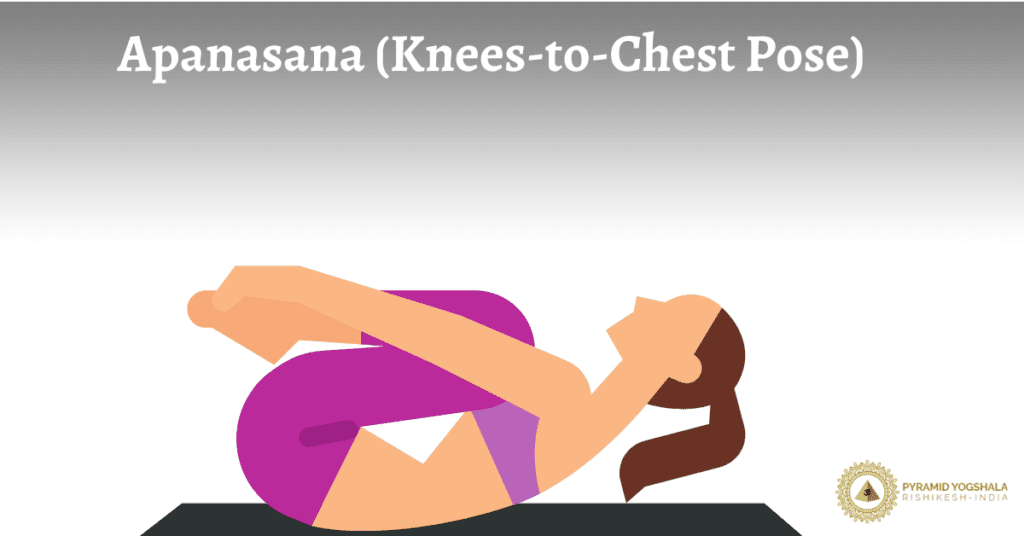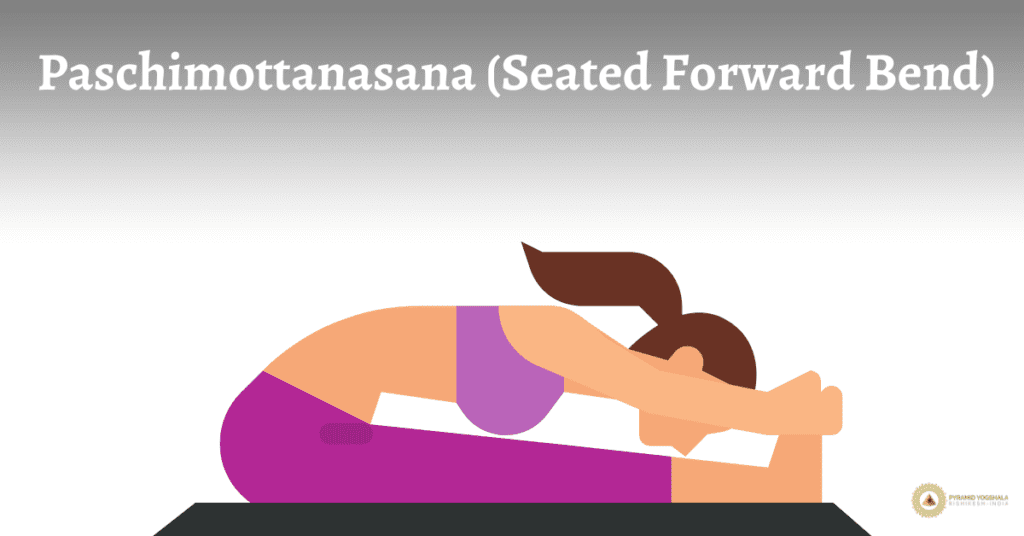In today’s fast-paced world, digestive issues like gas and bloating have become increasingly common. While dietary choices and stress are significant contributors, there’s a natural, holistic way to tackle these problems: yoga. Practicing specific yoga asanas can not only alleviate gas and bloating but also improve overall digestive health. In this comprehensive guide, we’ll explore seven powerful yoga poses that can help you find relief and promote a healthier digestive system. Let’s dive into the details!
Table of Contents
Introduction
Understanding Gas and Bloating
How Yoga Helps in Relieving Gas
Top 7 Yoga Asanas to Relieve Gas
– Pawanmuktasana (Wind-Relieving Pose)
– Apanasana (Knees-to-Chest Pose)
– Marjariasana (Cat-Cow Pose)
– Ardha Matsyendrasana (Half Lord of the Fishes Pose)
– Dhanurasana (Bow Pose)
– Paschimottanasana (Seated Forward Bend)
– Supta Matsyendrasana (Supine Spinal Twist)
Tips for Practicing Yoga for Digestion
Additional Benefits of Yoga for Digestion
Conclusion
About Pyramid Yogshala
FAQs
Introduction
Digestive discomfort can disrupt daily life, causing pain and embarrassment. Gas and bloating are common issues, often resulting from poor diet, stress, or a sedentary lifestyle. Fortunately, yoga offers a natural remedy to these problems. By incorporating specific asanas into your daily routine, you can stimulate your digestive system, reduce gas, and enhance overall well-being.
Understanding Gas and Bloating
Gas and bloating occur when the digestive system struggles to process food efficiently. This can lead to the accumulation of gas in the intestines, causing discomfort and swelling. Common causes include:
– Overeating or eating too quickly
– Consuming gas-producing foods like beans, cabbage, and carbonated drinks
– Swallowing air while eating or drinking
– Stress and anxiety
While occasional gas and bloating are normal, chronic issues may require lifestyle changes and natural interventions like yoga.
How Yoga Helps in Relieving Gas
Yoga offers a multifaceted approach to improving digestion. The gentle stretching and twisting movements of yoga poses can:
– Stimulate the digestive organs, enhancing their function
– Promote the expulsion of trapped gas
– Improve blood circulation to the digestive tract
– Reduce stress, which is often a significant factor in digestive problems
Practicing yoga regularly can help maintain a healthy digestive system, preventing the recurrence of gas and bloating.
Top 7 Yoga Asanas to Relieve Gas
1. Pawanmuktasana (Wind-Relieving Pose)
Pawanmuktasana is specifically designed to release trapped gas from the digestive system. Here’s how to perform it:
Steps
1. Lie flat on your back with your legs extended and arms by your sides.
2. Inhale deeply, then exhale and bring your right knee towards your chest.
3. Clasp your hands around your knee, pulling it closer to your chest.
4. Hold the position for 20-30 seconds, taking deep breaths.
5. Release and repeat with the left leg.
6. Finally, bring both knees to your chest, holding for another 20-30 seconds.
Benefits:
– Releases trapped gas
– Improves digestion
– Relieves lower back tension
2. Apanasana (Knees-to-Chest Pose)

Similar to Pawanmuktasana, Apanasana helps in massaging the digestive organs and promoting the expulsion of gas.
Steps:
1. Lie on your back with your legs extended and arms by your sides.
2. Inhale and bring both knees towards your chest.
3. Clasp your hands around your knees, pulling them closer.
4. Hold the position for 20-30 seconds, breathing deeply.
5. Release and repeat as needed.
Benefits:
– Relieves gas and bloating
– Stimulates bowel movements
– Reduces lower back pain
3. Marjariasana (Cat-Cow Pose)
Marjariasana combines two movements—Cat and Cow—that effectively massage the abdominal organs.

Steps:
1. Start on your hands and knees, with wrists under shoulders and knees under hips.
2. Inhale, arching your back and lifting your head and tailbone towards the ceiling (Cow Pose).
3. Exhale, rounding your back and tucking your chin to your chest (Cat Pose).
4. Continue alternating between Cow and Cat poses for 1-2 minutes.
Benefits:
– Massages abdominal organs
– Enhances spinal flexibility
– Reduces stress
4. Ardha Matsyendrasana (Half Lord of the Fishes Pose)

This seated twist helps in stimulating digestion and relieving gas.
Steps:
1. Sit on the floor with your legs extended.
2. Bend your right knee and place your right foot on the outside of your left knee.
3. Twist your torso to the right, placing your left elbow on the outside of your right knee.
4. Hold the position for 20-30 seconds, breathing deeply.
5. Release and repeat on the other side.
Benefits:
– Stimulates digestive organs
– Enhances spinal mobility
– Relieves lower back tension
5. Dhanurasana (Bow Pose)

Dhanurasana stretches the entire front of the body, including the abdomen, promoting better digestion.
Steps:
1. Lie on your stomach with your arms by your sides.
2. Bend your knees and reach back to grab your ankles.
3. Inhale and lift your chest and legs off the ground, creating a bow shape.
4. Hold the position for 20-30 seconds, breathing deeply.
5. Release and repeat as needed.
Benefits:
– Massages abdominal organs
– Improves digestion
– Strengthens back muscles
6. Paschimottanasana (Seated Forward Bend)

This forward bend helps in compressing the abdomen, stimulating the digestive organs.
Steps:
1. Sit on the floor with your legs extended.
2. Inhale and raise your arms overhead.
3. Exhale and bend forward from your hips, reaching for your feet.
4. Hold the position for 20-30 seconds, breathing deeply.
5. Release and repeat as needed.
Benefits:
– Stimulates digestion
– Calms the mind
– Stretches the spine and hamstrings
7. Supta Matsyendrasana (Supine Spinal Twist)

This gentle twist helps in releasing trapped gas and improving digestion.
Steps:
1. Lie on your back with your arms extended to the sides.
2. Bend your knees and bring them towards your chest.
3. Let your knees fall to the right, keeping your shoulders on the ground.
4. Hold the position for 20-30 seconds, breathing deeply.
5. Release and repeat on the other side.
Benefits:
– Relieves gas and bloating
– Enhances spinal mobility
– Reduces stress
Tips for Practicing Yoga for Digestion
1. Practice on an Empty Stomach: Perform yoga poses at least 2-3 hours after a meal to avoid discomfort.
2. Stay Hydrated: Drink plenty of water throughout the day to aid digestion.
3. Breathe Deeply: Focus on deep, mindful breathing during each pose to enhance its benefits.
4. Consistency is Key: Practice regularly for optimal results.
5. Listen to Your Body: Avoid pushing yourself too hard and modify poses as needed.
Additional Benefits of Yoga for Digestion
Beyond relieving gas and bloating, yoga offers numerous other benefits for digestive health:
– Reduces Stress: Yoga promotes relaxation, which can reduce stress-related digestive health issues.
– Improves Metabolism: Regular practice can enhance metabolic function.
– Promotes Detoxification: Certain poses stimulate the liver and kidneys, aiding in detoxification.
– Enhances Mind-Body Connection: Yoga fosters awareness of how your body responds to different foods and stressors.
Conclusion
Incorporating these yoga asanas into your daily routine can significantly improve your digestive health, alleviating gas and bloating. Remember, consistency is essential for long-term benefits. Start with a few poses and gradually increase your practice as you become more comfortable.
About Pyramid Yogshala
Pyramid Yogshala is a renowned yoga school dedicated to promoting holistic health and well-being. Located in the serene surroundings of Rishikesh, India, Pyramid Yogshala offers a range of yoga courses and retreats designed to deepen your practice and enhance your understanding of yoga’s transformative power. With experienced instructors and a supportive community, Pyramid Yogshala is the perfect place to embark on your yoga journey.
FAQs
Q1: How often should I practice these yoga poses to see results?
A1: Practicing these poses 3-4 times a week can help you see significant improvements in digestion and relief from gas and bloating.
Q2: Can beginners perform these yoga poses?
A2: Yes, these poses are beginner-friendly. However, it’s essential to listen to your body and modify poses as needed.
Q3: Are there any dietary changes I should make alongside yoga to improve digestion?
A3: Eating a balanced diet rich in fiber, staying hydrated, and avoiding gas-producing foods can complement your yoga practice for better digestion.
Q4: How long should I hold each pose?
A4: Holding each pose for 20-30 seconds, while taking deep breaths, is typically sufficient. As you become more comfortable, you can extend the duration.
Q5: Can yoga help with other digestive issues like constipation or acid reflux?
A5: Yes, yoga can help with various digestive health issues by promoting relaxation, stimulating digestive organs, and enhancing overall gut health.
By integrating these yoga asanas into your routine and adopting a mindful approach to your diet and lifestyle, you can achieve lasting relief from gas and bloating, paving the way for a healthier, more comfortable life. Namaste!


